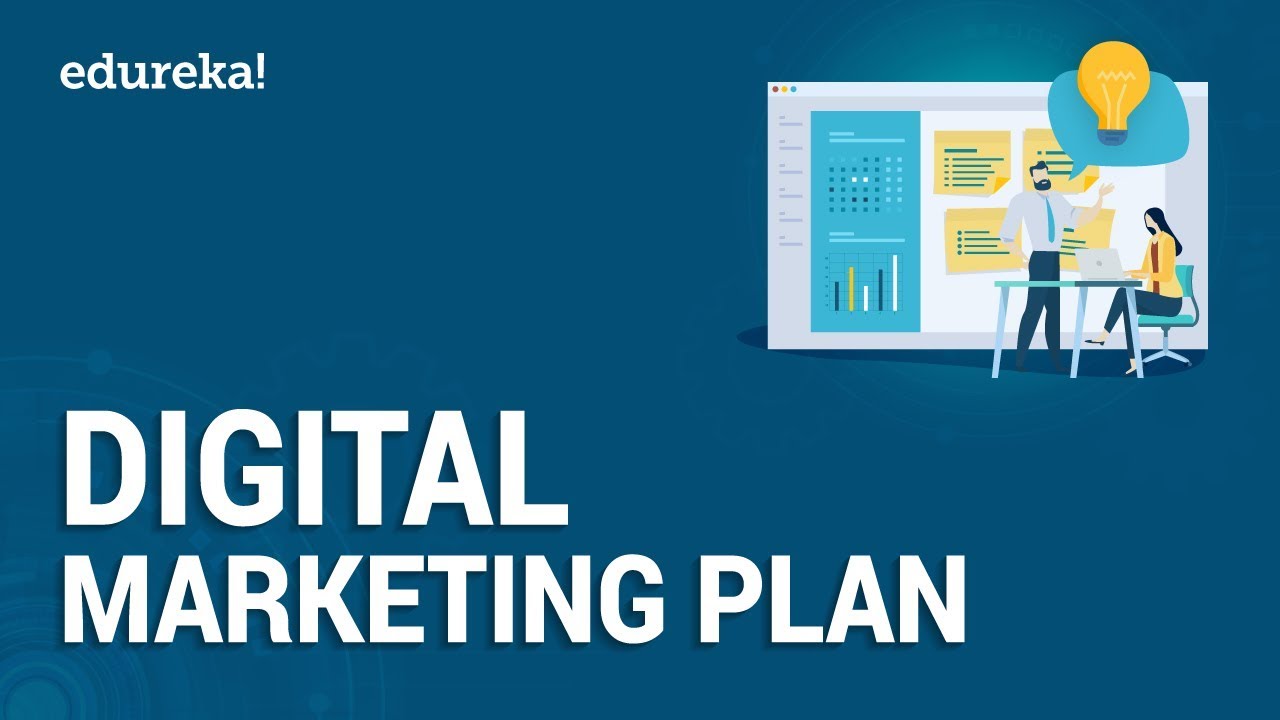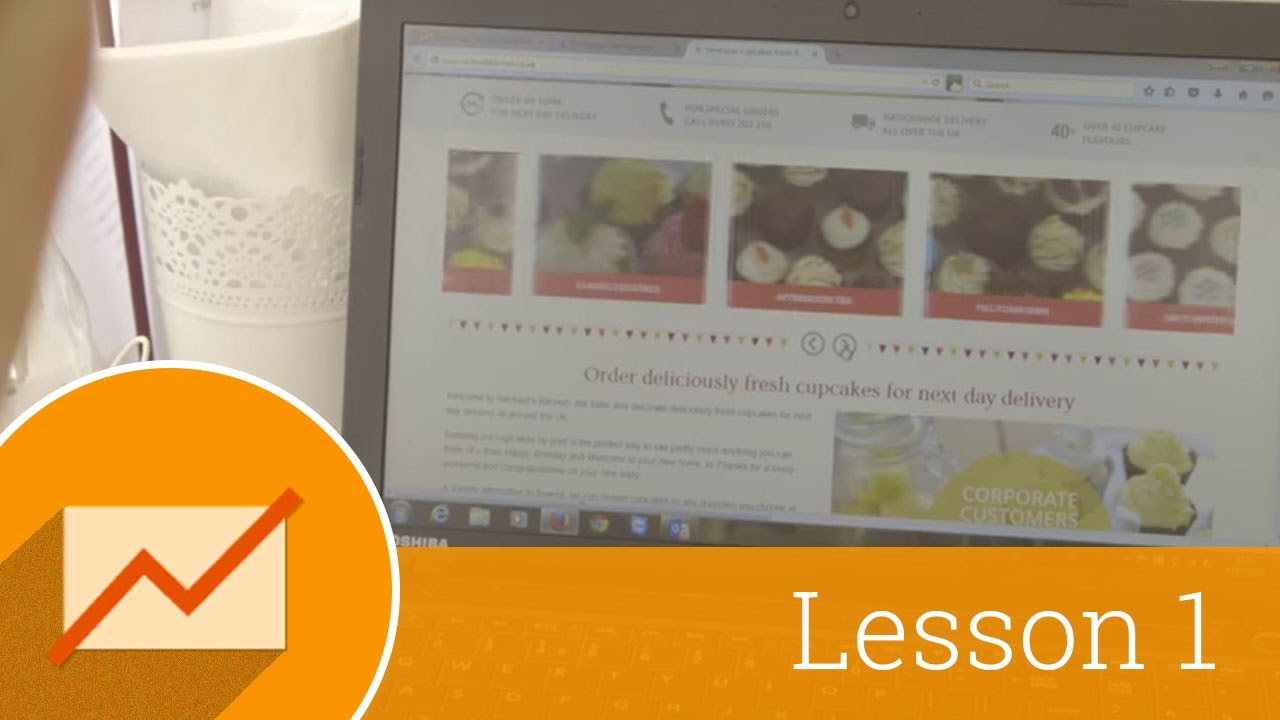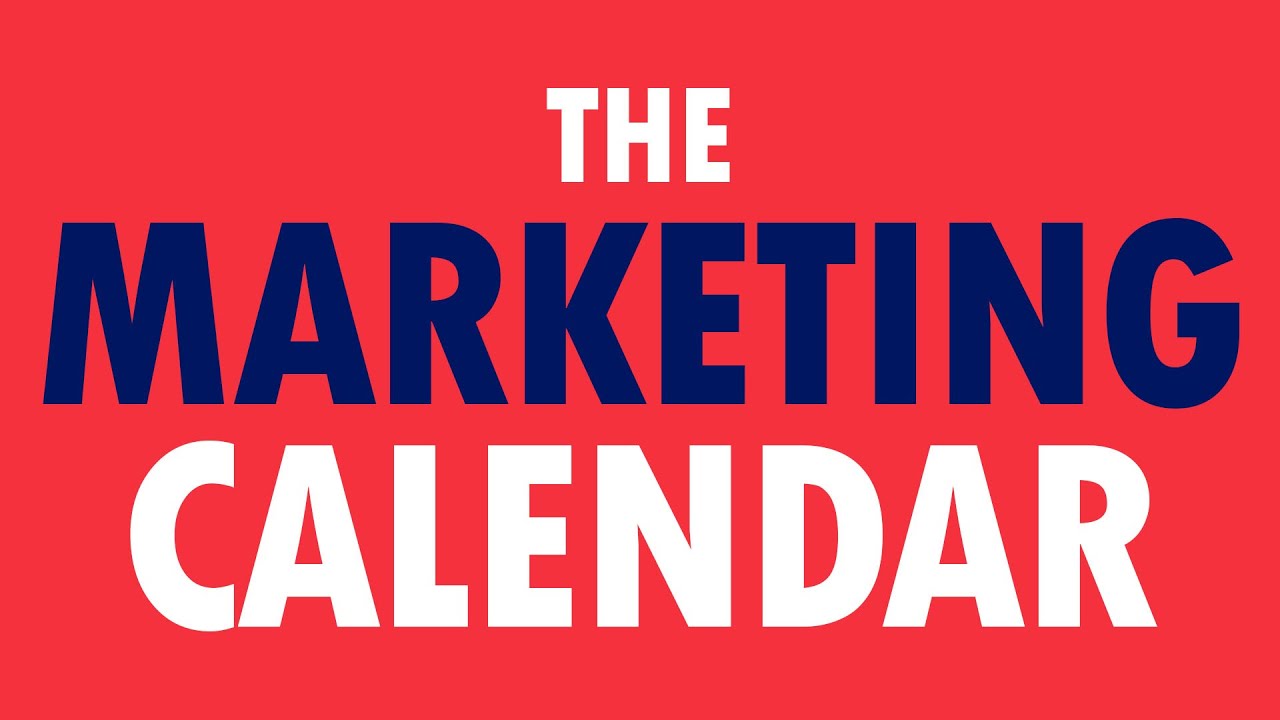To reach your brand's goals, you need to have a good digital marketing plan. It's a tool that will help you plan all of your marketing efforts and your regular work. However, just making a plan does not guarantee results.
If you don't have a plan or strategy in place before you start your digital marketing plan, it could fail if you don't think about all the things that could affect its growth. And when it comes to digital marketing, it's important to do it right because it can change a business.
For a digital marketing plan to really work, it needs to include all the necessary information and be useful. The results will be worth the time and moneyyou put into it. So, let's talk about how tomake a good one!
What Is A Digital Marketing Plan?

Digital Marketing Plan | Digital Marketing Best Practices | Digital Marketing Training | Edureka
A digital marketing plan is a document that outlines marketing goalsthat need to be met in a certain amount of time so that a businesscan meet its business goals.
When making a digital marketing plan, it's important to keep in mind that marketing is still about getting the benefits of your product or service across to customers in a way that makes sense to them.
So, your plan should be centered on the marketing strategies that will help your business connect with your target audience in a way that makes sense.
One of the great things about digital marketing is that you can quickly change your plan based on what works and what doesn't. The term "digital marketing" is often used to cover a wide range of different things.
A digital marketing plan is made up of many different parts, such as marketing automation, research, and pay-per-click ads.
Why Is It Important To Have A Digital Marketing Plan?
Even though only 37% of marketers write down what they do, data shows that doing so increases the chances of your business being successful. A well-made plan has a "map" that shows step-by-step instructions for how to reach goals.
Here are the most important ways in which a marketing plan can help your business.
- Understanding of the target audience.A good marketing plan starts with research to figure out who your target audience is. With a clear idea of who your target audience is, you'll be able to understand how your customers behave and change your sales model to help them buy. You'll also be able to speak the same language with your customers and give them real help during the buying process. You'll also be able to better understand their needs and launch products that meet those needs.
- Efficient use of resources.Having a plan keeps you from spending moneyon things that your business doesn't need and that you haven't already talked about. Your marketing plan can also help you make good use of your time by giving you clear deadlines.
- The same direction for all company departments.Since everyone in your company can use the plan as a way to coordinate, it makes it easier for everyone to talk to each other and move in the same direction.
Components Of A Digital Marketing Plan
Advertising
Online advertising involves bidding on and buying relevant ad units on third-party sites, such as display ads on blogs, forums, and other relevant sites. Images, text, pop-ups, banners, and videos are all different kinds of ads.
Retargeting is an important part of advertising on the Internet. For retargeting to work, you need code that adds an anonymous browser cookie to keep track of new people who come to your site.
Then, when that visitor goes to other sites, you can show them ads for your product or service. This lets you focus your advertising on people who have already shown an interest in your business.
Content Marketing
Content marketingis an important way to get potential customers interested in your business. Thought leadershipcan be established by putting out high-quality, relevant contentonline on a regular basis.
It can help your SEOrankings and teach your target customers about the problems your product can solve for them. Content can include blog posts, case studies, whitepapers, and other useful materials for your target audience.
Then, these digital content assets can be used in both free and paid ways to bring in new customers.
Email Marketing
Email marketingis a type of direct marketingin which promotional messages are sent to a small group of prospects or customers. Email marketing is still a good way to send personalized messages that are tailored to the needs and interests of customers.
It is most often used by e-commerce businesses to keep their names in front of their customers' minds.
Mobile Marketing
Mobile marketing is the process of advertising goods or services through mobile phones and devices. This includes advertising on phones through text messages or in apps that can be downloaded.
But a complete mobile marketing plan also involves making sure that websites, landing pages, emails, and content work well on mobile devices.
Paid Search
Paid search lets companies bid on certain keywords and buy ad space in the search engineresults. This makes search engines more visible. Only people who are actively looking for the keywords you choose will see your ads.
There are two main kinds of paid search advertising: cost per mille (CPM) and pay per click(PPC). With PPC, you only pay for your ad when someone clicks on it. With CPM, you pay based on how many people see your ad.
Google Adwords is the most popular paid search advertising platform, but there are also paid programs on other search engines like Bing.
Programmatic Advertising
Programmatic advertisingis a way to bid on digital ads that is done automatically. When someone visits a website, their profile information is used to sell the ad impression to different advertisers.
Programmatic advertising gives you more control over where your ads are shown and who sees them, so you can make your campaigns more effective.
Reputation Marketing
Reputation marketing is all about getting good online reviews and letting people know about them. Reading online reviews can change a customer's mind about what to buy, and it's an important part of your brand and product's reputation as a whole.
A strategy for marketing your online reputation encourages customers to leave positive reviews on sites where people looking for reviews look for reviews. A lot of these review sites also have native advertising, which lets companies put ads on the profiles of their competitors.
Search Engine Optimization
Search engine optimization(SEO) is all about getting more people to visit your website without paying for ads. SEOactivities include both technical and creative ways to improve search engine rankings and raise awareness.
Google, Bing, and Yahoo are the search engines that people use the most. To keep a strong ranking, digital marketing managers focus on optimizing levers like keywords, crosslinks, backlinks, and original content.
Social Media Marketing
Marketing on social mediais an important part of digital marketing. Digital marketing managers can reach and talk to potential customers for a fee on platforms like Facebook, Twitter, Pinterest, Instagram, Tumblr, LinkedIn, and even YouTube.
Digital marketing campaigns often combine free efforts with sponsored content and paid advertising on key social media channels to reach more people and boost brand lift.
Video Marketing
Video marketing lets businesses connect with customers in a way that is more interactive and visually appealing. You can show off new products, events, and special announcements. You can also share educational content and personal stories.
YouTube and Vimeo are the most popular places where videos are shared and advertised. Another way digital marketers can reach people on video platforms is through pre-roll ads, which play for the first 5–10 seconds of a video.
Web Analytics

What is web analytics?
Let marketing managers keep track of what people do online. Digital marketing is based on collecting and analyzing this data because it tells companies how customers act and what they like when they shop online.
Google Analyticsis the most popular tool for looking at how people use a website. Other tools include Adobe Analytics, Coremetrics, Crazy Egg, and more.
Webinars
Webinars are online events that let companies talk to potential customers and current customers no matter where they are. Webinars are a good way to show relevant information to a specific audience in real-time, like a product demo or seminar.
By interacting directly with your audience in this way, your company can show that it knows a lot about the subject.
Many companies use attendee lists in other marketing programs, like email and retargeting ads, to find new customers and strengthen relationships with those they already have.
9 Steps In Making an Effective Digital Marketing Plan

How to Create a Marketing Plan | Step-by-Step Guide
Define Your Digital Marketing Goals And Business Objectives
Clear, measurable, and doable goals for your digital marketing plan help you figure out what you want to do and how to measure it. When you set these goals, be clear and to the point.
You should also write down specific numbers and dates so you can track your progress.
Instead, a much better goal would be to double the amount of traffic from organic searches in the next 12 months. This gives you a deadline, a plan for setting milestone goals, and clear steps to follow.
Define Audience Segmentation And Buyer Personas
One of the most important things about digital marketing is that it lets you target your audience with a lot of accuracy. If you want your digital marketing campaign to work, you have to know who you're trying to reach.
By dividing your audience into groups and making buyer personas for each group, you can learn what kinds of marketing will work best for each group. For each of these groups, your buyer personas and marketing plans will look very different.
Start by making a list of the different types of people you want to reach. From there, you can start creating the "personas" of your ideal customers in each segment. Here are nine great personas to help you get started.
Your buyer persona information will depend on whether you sell to businesses or to consumers and how much your product or service costs. You might want to add the following demographic and other information:
- Age range
- Income
- Job title
- Location
- Priorities
- Goals
- Challenges
- Interests
- Social media platforms
- Industry
- Pain points
- Products/features desired
When you make personas, you want to put yourself in the shoes of your ideal customers and see things from their point of view.
Conduct Competitive Analysis And Determine Market Share
If you want your marketing to work, you need to know who your competitors are. A competitive analysis lets you figure out who your competitors are, how big your share of the market is, and what marketing strategies they use.
- When you do a competitive analysis, you should think about the following:
- Which audience segments are they targeting?
- What digital marketing channels are your competitors using?
- Where are they strongest?
- Where are they weakest?
- What portion of their traffic is earned/owned/paid?
- What’s their positioning in the market?
- What’s their claimed differentiation?
- What type of messaging and specific language do they use?
- What is their tonality and brand personality?
An in-depth analysis of the competitive landscape will show you how to use online marketing to beat your competitors. For instance, you may realize that your competitors' positioning and what makes them different are well-known, so you'll do well to make your own clear in comparison.
Or you might find out that they are good at social media marketingbut not so good at search engine optimization (SEO).
Conduct A SWOT Analysis

How to Perform a SWOT Analysis
SWOT analysis is the opposite of a competitive landscape analysis. It looks at a company's strengths, weaknesses, opportunities, and threats. It gives you a way to compare your business to other things going on in your market.
Use this process to figure out what's working, find opportunities for organic growth, and get ready for threats from the outside.
- First, look at what your company does well. What are the main things you do better than your competitors? What are the things you do really well? What unique resources do you have at your disposal?
- Next, look at what you do badly. What parts of your business don't work as well as they should? What keeps you from selling things? Where do you fall behind your rivals?
- The third step is to take a close look at the chances your company has. Can you take advantage of any market trends? Can you use new technology in ways that your rivals can't? Is there a part of your audience that you don't serve well enough?
- Lastly, figure out what could go wrong with your business. Could a competitor take away some of the market? Are there any things that stop a business from growing? Are there any possible money problems on the horizon?
Your SWOT analysis will help you come up with a plan for digital marketing. Your plan should play to your strengths, make your weaknesses less of a problem, move you toward opportunities, and keep you away from possible threats.
All of this is done to help you make more money.
Calculate Your Digital Marketing Plan Budget
Calculating your budget is the next step in making the best digital marketing plan for your brand. The budget will tell you how much you can spend on digital marketing activities and point you in the direction of certain channels, strategies, and tactics.
How much you set aside for digital marketing will depend on a number of things, such as:
- Revenue
- Position within the industry
- Previous results
- Goals
- Location
- Profitability of a strategy, tactic, or campaign
It's important to set a budget right away. But keep an open mind so you can take advantage of opportunities to get a better SEO ROI.
If you see that a certain campaign isn't giving you a good return on investment (ROI), you might be better off cutting that spend. Also, if you see that a certain campaign (or channel) is getting a lot of results, you might want to change the budget and put more money into what's working.
If you have a high-profit return-on-spend goal in mind, you should keep increasing the budget as long as your acquisition costs stay below the goal. In this way, your budget can be a flexible way to help your digital marketing efforts grow and change.
Define Your Digital Marketing Channels

List of all Digital Marketing Channels
Before you can make a content strategy, you'll need to decide on your main digital marketing channels. When choosing channels, you should think about your audience, your goals, and your budget.
To improve ROI, use channels that cost less, such as SEO and content marketing. These channels take longer to work, but they have a much lower cost of acquisition, so you get more for your money.
Also, the results of SEO and content marketing add up over time, setting you up for long-term success.
When deciding on your digital channels, think about where most of your audience spends their time. If you work in a B2B industry, you might want to focus on channels like LinkedIn or webinars.
If your audience is mostly made up of younger people, you might want to use Instagram for influencer marketing. Focus on how you can give your audience something of value through the channels they like best.
And don't assume your audience doesn't care about great content. Some of the best examples of content marketing come from a wide range of companies whose customers are very different from each other.
Develop Your Digital Marketing Strategies And Tactics
After you've decided on your channels, you need to come up with the digital marketing strategies and tactics you'll use in each one.
For example, if you want to focus on search engine optimization, you need to decide what keywords you want to target and how you want to target them. You might choose to make a hub for all of your content, online courses, SEO topic clusters, or a set of online tools.
You could also decide to give better, more detailed how-to information, or to talk about upcoming trends, or to feature celebrities in your content.
If you want to get more b2b leads, you might want to make case studies that show how you did. Look for ways to set yourself apart from the competition as you think about your digital marketing strategies and plans.
The more competition there is in the market, the harder you'll have to work to get people's attention and get your digital marketing portfolio truly optimized. Be true to your brand no matter what when you build your digital marketing plan.
Create A Marketing Calendar

The Marketing Calendar
With a marketing calendar, you can plan out exactly when your digital marketing campaigns and initiatives will happen. It also makes you responsible, making sure you meet deadlines and carry out the plan well throughout the year.
A calendar also helps you make sure that you reach all of your different types of audience throughout the year.
Try to plan out the next 12 months and divide your calendar into each month. This will give you an overall plan and give you enough time to prepare for and carry out each delivery.
Measure The Results And KPIs Of Your Digital Marketing Plan
The last step in making a digital marketing plan and strategy is to set up metrics and key performance indicators so you can measure your results (KPIs). You need to compare the results of your marketing efforts to both the starting point and the goals you set out to achieve.
If the results aren't very good, make changes to improve them and then measure again. Be sure to measure each channel so that you, as a marketer, can see what's working best for your brand and what might need to be cut.
People Also Ask
What Are The 7 P's Of Digital Marketing?
Marketing decisions about product, price, place, promotion, people, process, and physical evidence can have a lot of positive effects. Marketing can make a business more competitive in the market if the business knows how to connect all the pieces.
What Are The 4 Elements For A Successful Digital Marketing Plan?
- Paid Advertising
- Search Engine Optimization
- Social Media Strategy
- Email Marketing
What Is The Most Effective Digital Marketing Strategy?
Smart Insights says that social media marketing was the most effective strategy in 2018, followed by content marketing. The least effective strategy was data management, and SEO was somewhere in the middle.
Conclusion
Your online presence is the same as your store. It's a place where people can "walk in" and find out more about you and what you have to offer. It's where most of your customers will look for you first. And if you don't have a physical store, it's the only way people will find you!
To create a realistic digital marketing plan and budget. Take a step back and look at what you've done in the past, what's working and what's not, and look for ways to improve. With good data and analysis, you can make sure your organization spends money where it will get the best return on investment.